You’ve probably heard that lysergic acid diethylamide (LSD) stays in your body forever. A single LSD trip, usually taken on paper as a small square or liquid, the molecule will embed itself in your spinal fluid and stay there for a long time. There it remains seemingly forever, waiting for the unsuspecting moment when it will release itself and cause you to have a full-on psychedelic effect. In fact, you might even believe that this spinal fluid LSD is the reason for flashbacks. The flashbacks result from the drug leaking out of your spinal column, causing you to trip at the least expected moment.
And with the anti-drug messaging and stories supporting the idea, it makes sense to think so. But do psychedelics like LSD remain in the spinal fluid forever and come back without warning, causing one to hallucinate? Well, that’s what we’ll be discussing in this article. But first, let’s understand how hallucinogens work.
Classic hallucinogens are thought to trigger perception-altering effects by stimulating the serotonin 2A receptor. Their effects mostly happen in the prefrontal cortex, which is responsible for perception, cognition and mood, along with other brain parts involved in psychological responses to things like panic and stress.

The effects of using hallucinogenic drugs include seeing images, feeling sensations, and hearing sounds that seem real but don’t exist. Short-term effects of LSD, peyote, and psilocybin include:
An LSD overdose can cause drug-induced psychosis and bad trips that include terrifying thoughts and intense feelings of despair and anxiety, including fears of insanity, losing control, or even death.
A drug-related flashback is a type of distorted sensory experience or disturbing perception that affects a person’s senses long after the drug's actual effects wear off. It is often associated with hallucinogenic drugs like magic mushrooms or LSD (acid). A flashback is different from memory because it feels like it’s happening all over again. It’s important to note that research doesn’t support flashbacks because they are not a real phenomenon. But don't just believe us... Here's Norm Macdonald's hilarious take on the subject.
It is often thought that LSD embeds in the body system for a lifetime and can cause sudden flashbacks from time to time. However, the truth is that there’s still a lot to learn about psychedelics and flashbacks because research on the subject is very limited.
Recently, two neuroscientists from the Norwegian University of Science and Technology studied the link between lifetime psychedelic use and mental health. The investigators used the annual National Survey on Drug use and Health which gathers data on mental health and substance use from a random sample representative of the United States non-institutionalized population.
Over 13% of the 135,095 randomly selected participants said they had used psychedelics like LSD, mescaline, and psilocybin at least once in their life. The results showed that psychedelic use was not strongly connected to severe psychological distress, psychiatric symptoms, or needing or getting mental health treatment. The authors also discussed the flashback concept and concluded that hallucinogen persisting perceptual disorder, where visual symptoms are connected to using psychedelics, was erroneous. However, other studies suggest that flashbacks long after taking the drug are rare, but possible nonetheless.
Some theories suggest that people who get continuous ill effects after an intense psychedelic experience could have possibly acquired post-traumatic stress disorder (PTSD) and mistake it for an LSD flashback. Others claim that psychedelics open a “door” that exposes one to another dimension of reality. This door doesn’t entirely shut for weeks or months of stopping to use the drugs. So, sometimes, all it takes is just one joint to creak the door open even a little and send one into full-on epiphany or realizations that they might have had similar to your acid trip.

One study determined that LSD flashbacks were triggered by selective serotonin reuptake inhibitors (SSRIs) intake. Other studies suggest these aren’t LSD flashbacks but increased sensitivity to all psychoactive substances. What is real is something called Hallucinogen Persisting Perception Disorder (HPPD). After a psychedelic trip, LSD users can have lingering visuals that can distract them from their everyday lives. They can have tracers that last indefinitely after the trip. Or they can have some haze that goes over everything that they look at. This makes the vision not as clear as it used to be.
People who use hallucinogenic drugs like LSD, magic mushrooms, or ecstasy can re-experience the visual disturbance days, weeks, months, or even years after using it. They may see weird, trippy symptoms like flashes of color, intensified colors, size confusion, tracers, images within images, geometric patterns, or even having difficulty reading. And since they’re aware of what’s happening, they may feel uneasy, uncomfortable, or even embarrassed.
According to the Diagnostics and Statistical Manual of Mental Disorders, an HPPD candidate must experience a spontaneous reappearance of the visual phenomena long after the hallucinogen use has stopped. The effects should cause significant distress and not be explainable by other medical conditions.
However, the connection between Hallucinogen Persisting Perception Disorder and hallucinogen intoxication is still unclear. According to a review by psychiatrist John Halpern and co-authors, it’s hard to cancel other health conditions that might cause flashbacks. These conditions include anxiety disorders, malingering, neurological conditions, current intoxication with other drugs, hypochondriasis, or current psychotic or affective disorders.

In another web-based survey, 60.6% of 2455 participants reported having experienced drug-free visual experiences similar to hallucinogen effects. The chances of experiencing constant or near-constant symptoms were predicted by greater past exposure to specific hallucinogens. While symptoms of HPPD were common, 4.2% of the participants found them impairing or disturbing enough to consider getting treatment.
Gauging from the studies, it is still unclear whether the flashbacks from drugs are a real thing. However, the reality is that these visual disturbances may be more common than previously thought. It’s is therefore worthy of conducting further studies to determine whether there’s a strong connection between the two or not.
Many drugs are available in the market today. When abused, they can have dangerous effects on the user’s health including heart attacks. This article will discuss various white powdered drugs, how they are used, and their effects on users. Let’s dive in.
Cocaine is a highly addictive stimulant drug. It is derived from leaves of the coca plant and sold in three forms; crack, cocaine hydrochloride, and freebase.
Crack cocaine consists of white crystals with a yellow or pink hue. Most times, crack contains impurities.
Cocaine hydrochloride is an ultra-fine white powder that has a tart, numbing flavor. Most times, vendors cut or mix cocaine powder with other substances, including talcum powder, sugar, or lidocaine, before selling it.
Freebase is also a white powder, but unlike cocaine hydrochloride, it does not contain impurities.
Most addicts snort cocaine hydrochloride and smoke freebase or crack. Regardless of whether one snorts or smokes cocaine, it has various side effects, including:
If you use cocaine regularly, you can suffer long-term consequences, such as heart disease, lung disease, sexual dysfunction, kidney failure, hypertension, seizures, and lung conditions, among others.
If you want to stop using cocaine, it would be best to seek professional help, especially if you are dependent. Medical practitioners can help you deal with withdrawal symptoms that can sometimes be overwhelming.
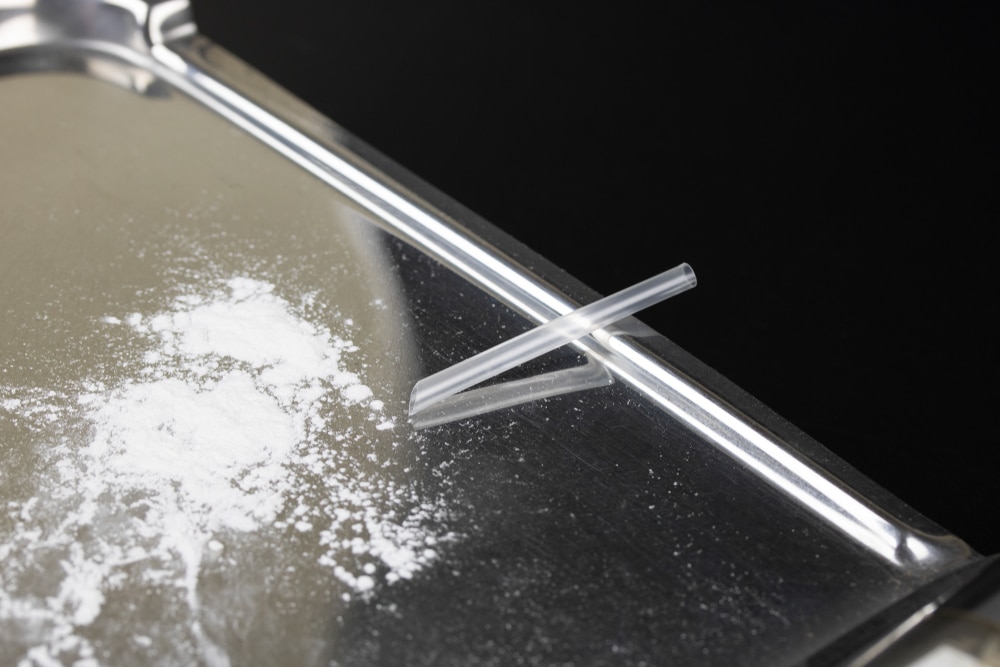
This is a dissociative drug. It affects specific brain chemicals to distort one’s auditory and visual, consequently detaching them from reality. Medical practitioners use doses of ketamine as a sedative. Unfortunately, some people illegally use it to get high.
Ketamine is sold as a white powder. It also goes by the names KitKat, horse trank, special K, and ket. Most people snort ketamine, but others smoke it with tobacco or cannabis. Ketamine can affect one’s senses or coordination for 24 hours.
Ketamine has several negative effects. Some effects of ketamine include:
If you become dependent on ketamine, you can suffer long-term effects like poor memory, poor kidney function, poor liver function, treatment-resistant depression, among others.
Ketamine addiction is a serious problem. If you notice that your dependence on ketamine addiction affects your health, relationships, school, work, or financial capability, you should seek professional help.
Heroin is a highly addictive drug made from morphine. It is sold as a white or brown powder and is ‘cut’ with quinine, sugar, powdered milk, or starch.
There are three types of heroin; white heroin, brown heroin, and black tar heroin.
Cheap heroin contains many impurities, so the more expensive it is, the fewer impurities it is likely to have.
Pure heroin is white. Most drug users smoke or snort pure heroin. The National Institute on Drug Abuse study revealed that snorting appeals to new users since they do not have to inject themselves with the drug.
Impure heroin is usually dark in color due to the simple methods of processing. Normally, heroin users dilute it and inject it under their skin, in their muscles, or veins.
Heroin has several effects on the body. The short term effects are:
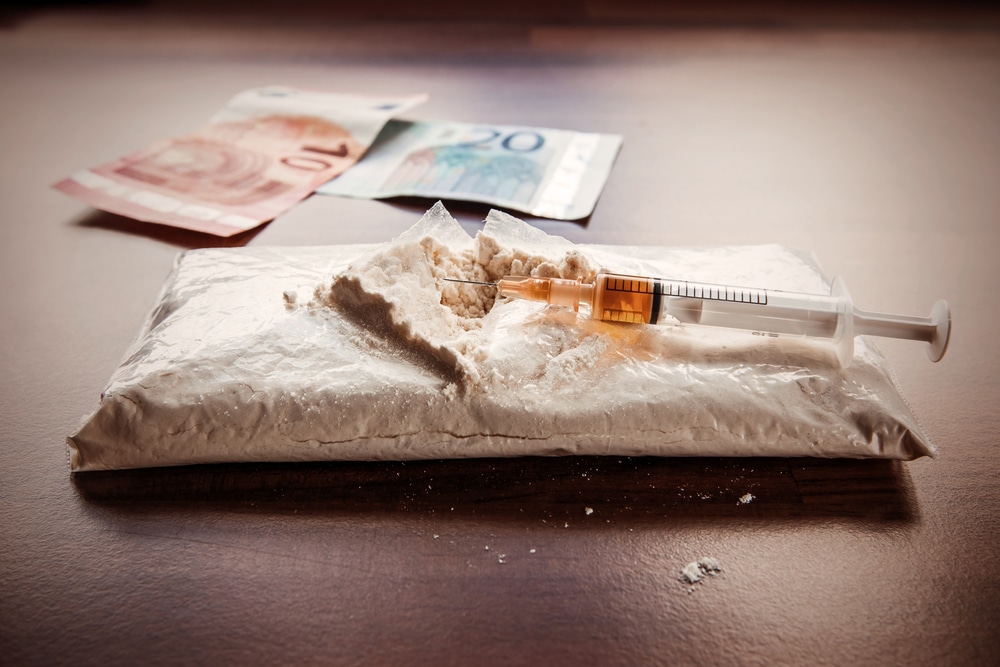
Long term effects include:
When you use heroin, your tolerance may build up. Therefore, you may need frequent or higher doses to achieve the high you want. Heroin addiction is a major problem. It can affect one’s health, social interactions, school, work, and finances, among other things.
If you decide to stop using heroin, you may have severe withdrawal symptoms. Therefore, it is best to seek help from professionals who will guide you through the process. They may prescribe behavioral therapy and medicine to help you in your journey.
OxyContin is a prescription drug. It contains oxycodone which is a very strong pain killer. Most people who abuse OxyContin start by taking the prescribed amount. With time, their bodies build tolerance, and they need to take more to feel relieved or get high.
OxyContin tablets are round and can either be white or blue. Most 10mg pills are white, while the blue ones are 160 mg. You can buy the capsule form of OxyContin or the liquid form.
People suffering from terminal illnesses or battling terminal conditions are more likely to get addicted since most people market it as a painkiller that gives relief for over 12 hours.
If you use OxyContin regularly, you are likely to become dependent because of its euphoric effects. People who struggle with OxyContin addiction crush OxyContin tablets to form a white powder. They then snort the powder to enhance OxyContin’s euphoric effect.
Like other drugs, crushed OxyContin can have serious negative effects. Some of the potential effects of abusing OxyContin include:
Adderall is a prescription drug usually prescribed to people who have ADHD. It simulates part of the brain and controls hyperactivity, enabling one to focus more and have more clarity on issues.

Some people illegally use Adderall for non-medicinal purposes, e.g., students when they are studying for exams. Since Adderall tablets are white, they crush it to form a white powder and snort it to enhance its effects.
Unfortunately, Adderall is highly addictive, and its misuse can lead to a substance use disorder. Using crushed Adderall for non-medicinal purposes can have risk factors, including:
Gamma-hydroxybutyrate, commonly known as GHB, is a popular party drug used in clubs and house parties alike. GHB is sold in three forms; liquid, capsule, or powder. Powdered GHB is white.
GHB is a depressant for the nervous system. When you use it, it slows your heart rate and makes you feel drowsy. It can also make a user go into a coma.
Most addicts use GHB because of its euphoric effect. Some use it as a date rape drug. They slip the GHB into their victims’ drinks, and when it kicks in, they sexually assault them. Other common date rape drugs are flunitrazepam, alcohol, and ketamine.
Like other drugs, GHB has negative long-term effects. Some of them are:
If you struggle with addiction to any white powdered drug, you should seek medical help and treatment. The more you continue abusing drugs, the more adverse their effects will be.
A lesion refers to an abnormal change on a body tissue organ caused by an injury or disease. Lesions could be a result of using recreational drugs or some specific FDA-approved drugs.
Drug abuse affects most body organs, and unfortunately, the damage done may remain hidden for several years. For example, alcohol strains the liver, heroin damages the kidneys, and cocaine stresses the heart.
The skin is the largest body organ. Abusing alcohol or drugs for a long period can cause skin lesions. Skin lesions can either be benign (non-cancerous) or malignant (cancerous), basically skin cancer. They can manifest as sores, a variety of infections, and even rotting of the skin.
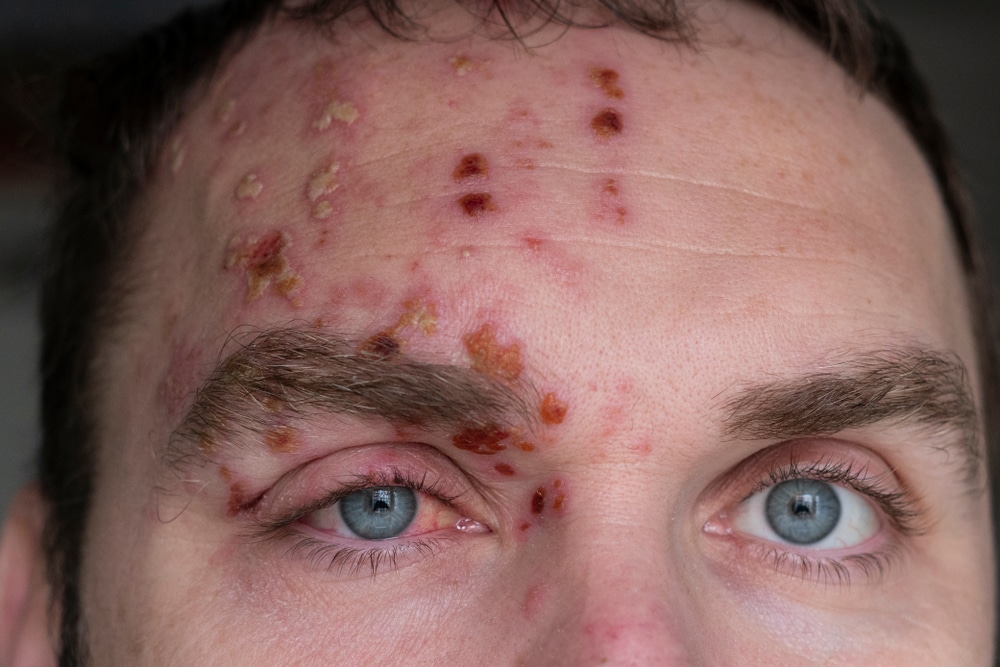
Four factors contribute to lesions. They include:
Here is how different addictive substances affect the skin.
The effect of heroin on the skin is more noticeable in users who prefer injecting the drug with needles, instead of snorting or smoking. Heroin users repeatedly penetrate their skin while seeking veins. This may lead to venous sclerosis, which refers to scarring of the veins. Venous sclerosis can result in skin infections, cellulitis, and abscesses.
Users who inject themselves with heroin through skin risk contracting necrotizing skin lesions due to skin popping. Skin popping allows bacteria to penetrate the skin and also leads to tissue trauma.
Most heroin users also complain about dry, itchy skin. Additionally, some users end up having an itchy hives-like rash.
Cocaine can directly affect the skin, and it can also affect internal organs, which in turn cause skin damage.
Here are some effects that cocaine has on the skin:
You should also know that a variety of substances are used to cut cocaine. Some of the substances can cause rotting of the skin and ulcerating skin lesions. Additionally, cocaine could cause a heart attack since its users have an increased heart rate.

Most people are unaware of the fact that alcohol abuse can have noticeable effects on their skin. The most common effect of alcohol on the skin is spider angioma. Spider angioma manifests as red lacy patches on the neck, torso, hands, and face.
Alcohol abuse also causes Caput medusa, a skin condition that causes the addict’s veins to swell and distend. The veins usually appear across the abdomen. Alcohol abuse also causes Porphyria Cutanea Tarda (PCT), a condition that causes scars on areas of the skin one exposes to the sun. Most people battling alcohol addiction have scars on their faces, hands, and feet.
Dermatologists also associate several dermatological conditions with alcohol abuse, including seborrheic dermatitis, rosacea, and eczema.
Most people who abuse methamphetamine (meth) end up having skin sores because they constantly pick their skin. Meth users pick at their skin because they, on several occasions, get the sensation of insects crawling even when they are not there. As a result, they easily develop sores. Some meth users also end up having dry skin.
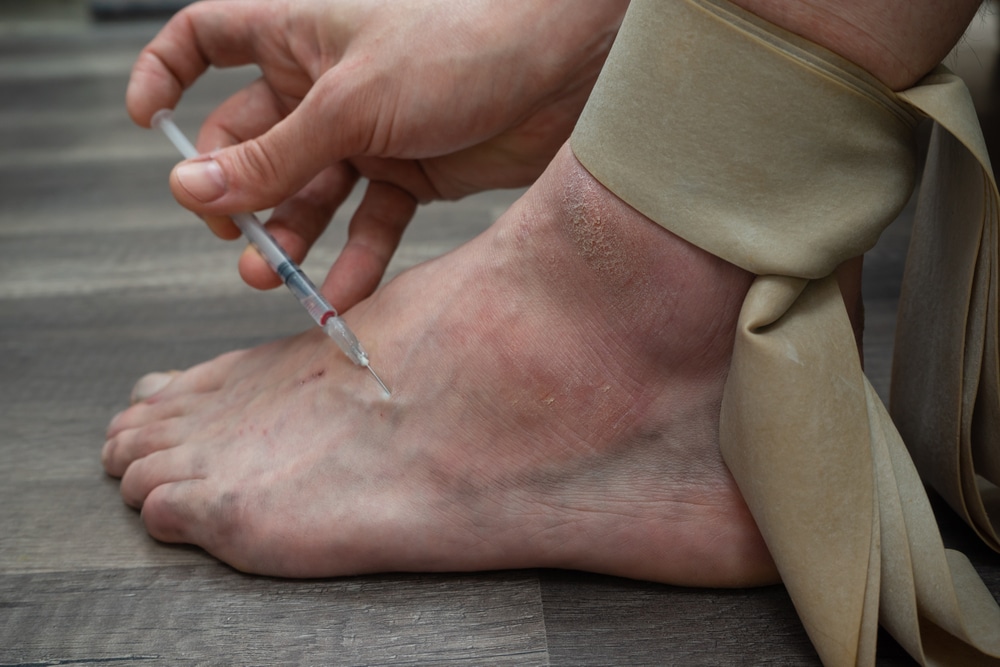
Meth users who inject themselves with the drug are also at risk of contracting skin infections. Research has shown that 11% of drug users that use injections report skin infections every few months.
Research has shown that marijuana can negatively affect your skin. The smoke from marijuana contains hydrocarbons. When the hydrocarbons come into contact with your skin, they interfere with your skin’s collagen production.
Note that collagen protects your skin against inflammation and air pollution. If your skin does not produce enough collagen, your skin will age prematurely and become wrinkled since it loses its elasticity. Cannabis-induced arteritis, which is a direct result of marijuana use, also has effects on the skin.

The street name of desomorphine is "krokodil" because it turns the skin green and scaly. Eventually, the skin sloughs off.
Krokodil is a cheap form of heroin. It has been dubbed the deadliest drug globally because it rots the skin from the inside out. Consequently, it causes abscesses and gangrene.
If you want to minimize the impact of drug abuse on your skin, the first thing you need to do is stop abusing drugs. Note that the more you abuse drugs, the more adverse effects they will have on your skin. Most people with addictions end up having very unhealthy skin.
If you are struggling with an addiction or substance use disorder, you should consider seeking medical advice, diagnosis, or treatment to beat the addiction. There are several treatment approaches to consider, so you should choose one that suits you best. If you have a supportive family, your family members will support you throughout your recovery journey, especially when dealing with withdrawal symptoms.
You may also have to undergo behavioral therapies to deal with unhealthy behaviors that destruct your skin or body organs in general.

Various drugs affect the skin differently. However, once you deal with your drug use and addiction, some effects will fade naturally. If you want to speed up the process, you can consult a dermatologist. The dermatologist will prescribe medications and, in some cases, ask you to follow a consistent skincare regimen.
If you are in the United States and need drug information, especially when it comes to drug addiction, you can contact the American Society of Addiction Medicine or the National Institute on Drug Abuse for more information.
If you want to maintain healthy skin, do not abuse drugs. You should specifically stay away from drugs that contain fillers or compounds as they tend to have adverse effects on the skin. In addition, moisturize, wear sunscreen, and maintain good hygiene to keep your skin healthy.
I can bet that you have at least once in your life interacted with drug sniffing dogs, be it at the airport, while crossing national borders, traffic stops, public events, or even in public schools. These dogs diligently sniff for any illegal drugs. Some are even trained to detect other substances, including invasive insects and parts of wildlife like ivory and rhino horns. Recently, dogs have shown us their incredible power of smell can detect diseases and viruses, such as the COVID-19 virus and even cancer.
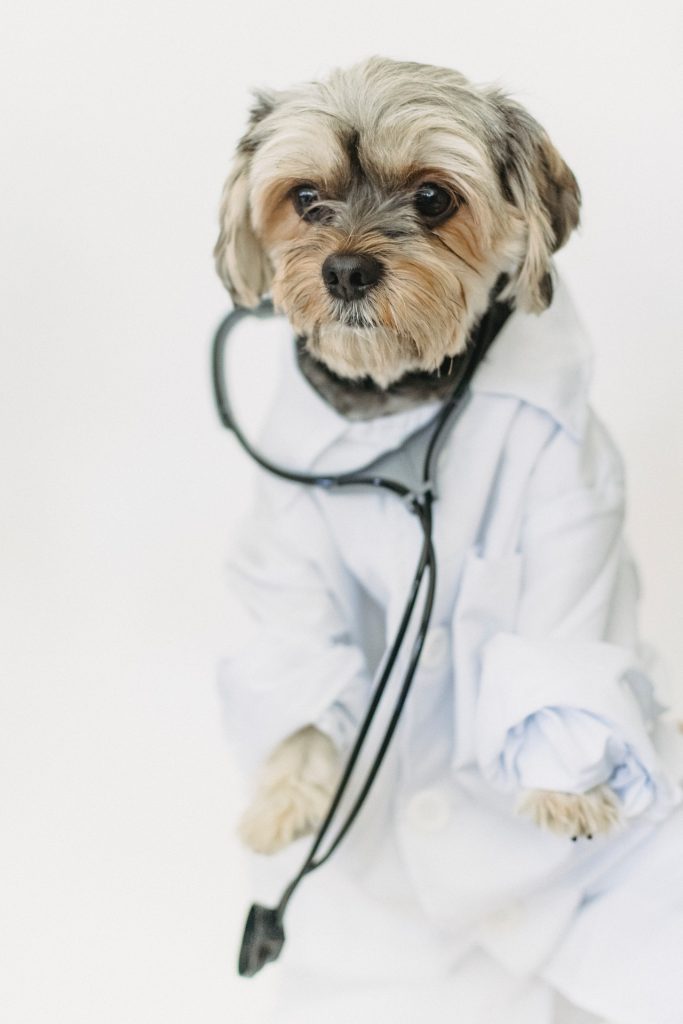
Most dog owners I have interacted with usually question how drug-sniffing dogs are trained. The onus of training a drug-sniffing dog falls on dog handlers. The handlers are typically trained, and they also do practical testing before being accredited and registered. This includes different methods than you would use to teach your dog.
Drug sniffing dogs have been used as the preferred method of searching for illegal drugs since time immemorial for various reasons. For starters, it is a fast and effective method of searching for illegal substances. Sniffer dogs are also reliable and accurate.
Another advantage is that sniffer dogs can screen a large number of people or even large areas simultaneously. Therefore, they are ideal for public events, borders and boundaries, educational establishments, multi-occupancy premises, and open-plan event spaces.
The typical way of training a sniffing dog is teaching it to associate the smell of its favorite toy or favorite treat with an illegal substance(s). By doing so, the dogs automatically link the scent of their favorite toy or treat to sourcing for drugs.
It is important to note that drug-sniffing dogs do not have an interest in the drugs. Their training program simply makes them associate the smell of drugs with a toy. All of the "urban legends" of police dogs being addicted to drugs, simply isn't true.

Dogs have a strong sense of smell. Scientists say that their sense of smell is about 10,000 to 100,000 times more acute that of humans.
That’s because they have 50 times more receptors than humans do. They also have a strong hunting desire that drives them to look for what their trainers have trained them to find. To get a reward, the dogs make sure that they don’t give false signals.
During the early stages or training, trainers reward the dogs whenever they recognize the target scent and alert their handler. With time, the dog undergoes basic obedience training and only gets a reward when it responds to basic commands like stand, stay, sit, bark, etc.
It’s pretty much the same technique you use when training a puppy. I like to think that if you can teach your dog to obey basic commands in house training when still a puppy, you can try your luck in training drug-sniffing dogs or police dogs.
Dog trainers train drug-sniffing dogs to alert their handlers when drugs are present. There are two main ways the dogs alert their handlers, depending on the type of training they underwent.
The first way is the passive indication. When drug-sniffing dogs indicate drugs, they either stand or sit. The other way is the aggressive indication. This is where drug-sniffing dog alerts their handler by barking, pawing, or digging at the location where they have detected drugs.
Dog handlers and sniffer dogs undergo intensive training. The training lasts for several months. Once the training is complete, and the handler and dog can work as a team, they are certified. However, they still undergo retraining and testing throughout their careers.
Retraining and testing ensure that the dogs’ and handlers’ skills are up to standard and reliable. Usually, detection dogs remain attached to their handler throughout their career. They are tested and retrained together. Most dog handlers have a military or police background.

Drug sniffing dogs come in handy in various operations, including; marine applications, airports, hospitals, media stations, mental health facilities, prisons, colleges, universities, businesses, events, and schools. Individuals that want tighter security measures in their homes can also use drug-sniffing dogs. I’ve heard of instances where parents hire drug-sniffing dogs for their private use.
These detection dogs can detect drugs within buildings, individuals, open areas, and vehicles stopped for a traffic violation. I have seen several law enforcement officers walking around with drug-sniffing dogs.
You probably already know that the Fourth Amendment right protects people from unreasonable searches. So what are your rights when it comes to drug-sniffing dogs?
It is notable that in law enforcement, one of the tools that can potentially violate the Fourth Amendment right is drug-sniffing dogs. Like I mentioned earlier in the article, American police officers commonly use dogs to sniff out illegal substances.
In emergencies, law enforcement officers can only use drug-sniffing dogs when they have probable cause to search someone’s belongings, including their house and vehicle. Suppose you are convinced that an officer violated your Fourth Amendment right with a drug-sniffing dog, you can file a motion to suppress any evidence that they discovered during the violation.
If a traffic cop stops you over a traffic violation, they need probable cause that you have committed a crime other than the traffic violation for them to search your car. If the officer does not have probable cause, he needs your permission to search your vehicle or let a drug-sniffing dog sniff the outside of your vehicle.
It is unconstitutional for police officers to conduct a drug sniff at traffic stops unless there is reasonable suspicion of a crime. Drug sniffs are categorized as searches in the Fourth Amendment.

With the Fourth Amendment, courts have enhanced the protection of an individual’s home against unnecessary searches. For an officer to bring a drug-sniffing dog to your front porch, he or she needs to have probable cause since every person has a right to a reasonable expectation of privacy in their home. This right extends to the area around the house, including side gardens and porches. However, it is essential to note that once you permit the officers to search your home, you have waived your Fourth Amendment right.
Drug-sniffing dogs undergo extensive training before their handlers use them in day to day operations. They rarely give false alarm, thanks to the training and tests that they undergo throughout their career.
Let me know how your experience with sniffer dogs was in the comments below.
Heroin addiction is a global problem. According to the World Health Organization, 58 million people around the world used opioids in 2018. In the same year, 46,802 opioid-involved overdose deaths occurred in the US. This was followed by a significant rise in 2019 to 49,860 overdose deaths.
The problem with the opioid drug is that it is highly addictive. Even those who take prescription opioids have an increased risk of developing an addiction. And when they develop an addiction, a good number of them turn to heroin because it is cheaper and easier to access. Heroin is typically sold as a white or brown powder that’s cut with starch sugars, synthetic opioids, or even powdered milk.
Pure heroin is a white powder. People who use pure heroin often sniff or smoke it. Any dark powder or black powder may indicate impurities. The same applies to heroin that’s hard as coal or sticky as tar. The dark color in black tar heroin results from crude process methods that don’t eliminate impurities. Those who use impure heroin dilute and inject it into the muscle, veins, or under the skin with an intravenous needle. This leaves behind track marks that can visually give away their drug use problem.
Track marks are the physical evidence of intravenous drug use, where a user introduces substances like heroin, cocaine, methamphetamine, or other illicit drugs directly into their bloodstream using a needle and syringe.
These are physical scarring that happen when one injects drugs repetitively. It’s common to spot profound track marks on people who are struggling with addiction because they are often injecting drugs, leading to scarring. Injecting the same place repeatedly disrupts the skin’s natural barriers and mutilates and bruises the veins in that area. So many drug users shift to other places like the ventrolateral muscle to try to prevent or hide scarring. This makes it hard to discover their using habits.
Track marks, also known as "needle marks" or "track lines," are visible signs on the skin resulting from repeated intravenous drug use, where drugs are injected directly into the veins. The appearance of track marks can vary based on factors such as the type of drug injected, the frequency of use, and individual differences.
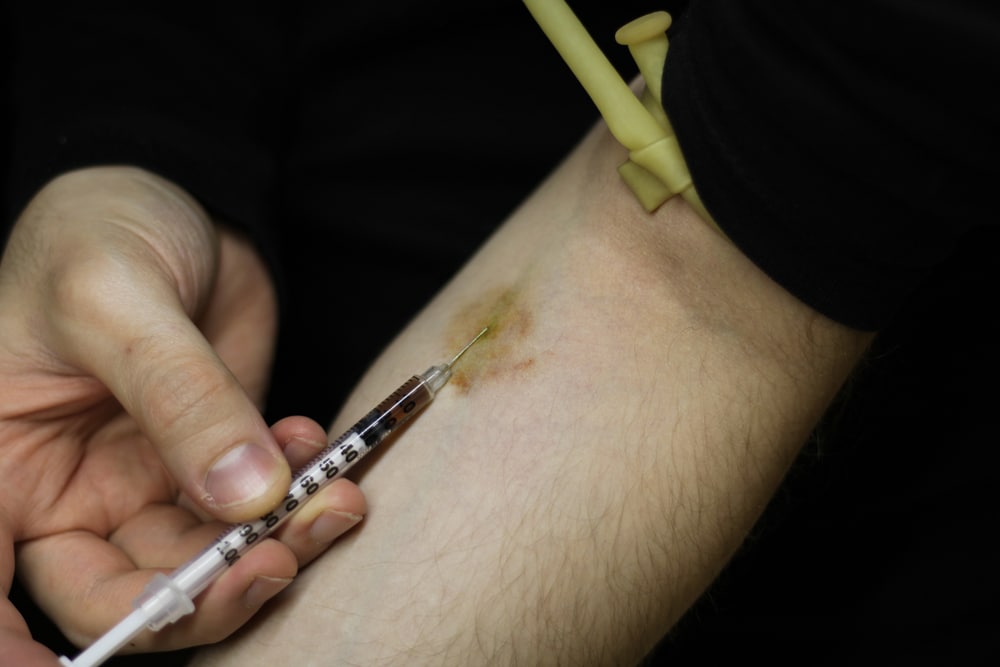
Many people who abuse heroin inject through the arms. In fact, it is the most common site of injection. That’s because the veins are visible, accessible, and easy to inject into. Unskilled or frequent injections in the arms leave track marks and may also cause infections. Heroin users will frequently switch injection sites to keep track marks and complications to a minimum. When they do, the legs and feet are often the next stop. Intramuscular injection is a bit challenging for many. So some users skip the leg and go for the feet because the veins are somewhat easy to inject into.
When someone keeps injecting drugs, they will develop scars, sores, or track marks that are easy to spot. That’s why many injecting drug users become adept at concealing these marks. Addicts hide their track marks with wear large clothes, long-sleeved shirts, sweaters, and things that cover the marks. But since hiding track marks in the arm isn’t always practical, many people will shift to hidden body parts that are harder to be seen.
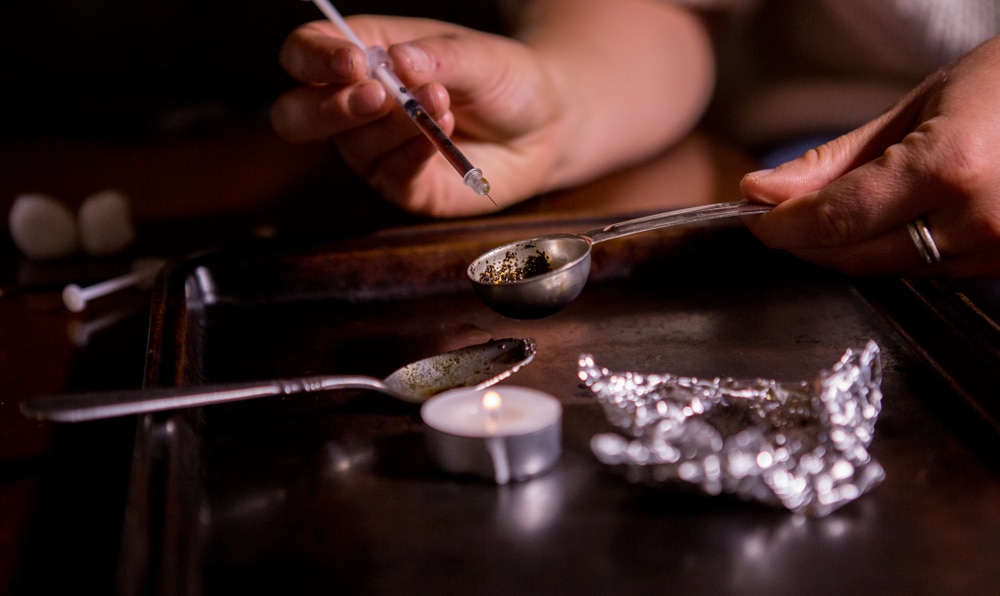
People who inject drugs are usually only concerned about getting the drugs into their system. As long as they can see a vein, they are good to go. Like arms and hands, the neck has veins and arteries that are close to the surface, making it an appealing option. But according to experts at the department of health, injecting in the neck is one of the riskiest drug-injecting behaviors. It increases the risk of damaging an artery or vein not directly visible at the injecting site. But since the neck is usually visible, most drug users will wear pull-necks, hoodies, or use shawls and scarves to cover up the track marks.
People struggling with heroin addiction may inject the drug along their hairline to conceal their using behavior. The hair does a great job covering the track marks and makes it hard for anyone to notice. Besides, it’s not easy for anyone to check the hairline in case they suspect use. Most people only check the arms. Injecting drugs along the hairline is a dangerous undertaking with potentially life-threatening side effects. In addition to track marks, subcutaneous injections carry the risk of infections. One may also suffer from issues like receding hairline or hair loss.
The wrist is closest to the arm, making it an obvious site for many people who use drugs. Track marks on the wrist are easier to hide. Besides wearing long-sleeved shirts and sweaters, one could cover the marks with a big bangle, watch, band, or cloth. And since these are everyday accessories, it can be hard for people to suspect drug use.
Armpits are naturally hidden, which makes them a great spot for hiding track marks. People who inject in armpits will almost always wear t-shirts or clothes that conceal track marks, even when they stretch. Unless there’s paraphernalia or other signs that give them away, they might go on using for a long time, completely undetected by their friends and family.
Veins in the legs and feet are common injection sites, especially when those in the arms and hand collapse or get damaged. Those who want to hide their track marks will avoid the legs and feet. Instead, they will inject theirtoes. This way, no one would notice even when they don’t have pants or socks on. Track marks between the toes are hard to spot, thanks to the location of the toes. But they are even harder to notice because those who inject their toes are determined to hide them. They will wear socks, shoes, or even wrap the toes with a Band-Aid. They may also cover their legs with a blanket or throw whenever they’re relaxing at home.
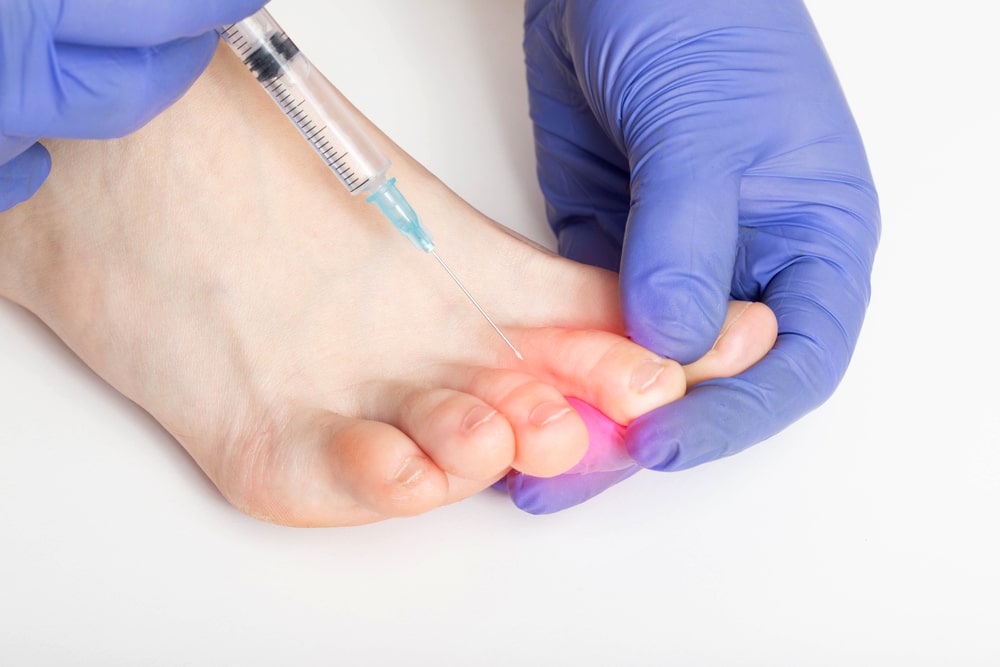
Heroin is not only highly addictive but also potentially life-threatening. With the rising cases of heroin overdose deaths, it’s always best to help your loved one get timely help. Remember, drug use is not a sign of weak morals. Many people who abuse drugs have underlying problems. According to the Substance Abuse and Mental Health Services Administration, substance abuse and mental health issues often co-occur. Addiction treatment can help address the underlying problems so that your loved one can go back to leading a healthy life.
People who consume illegal drugs use various ways to get the drugs into their bloodstream. Some take it orally, while others prefer snorting because it offers a faster "high." When drugs are snorted, it causes a much quicker onset of effect than oral ingestion. This is because of how fast the drug gets into the bloodstream through the soft tissue in the nasal cavity.
Drugs that users commonly snort include cocaine, heroin, meth, tobacco, amphetamines, and even prescription drugs, such as opioids or prescription stimulants like Adderall. Users chop the pills into a fine powder using a razor blade or credit card on a hard surface. They then divide the drug of choice into "lines" and use a rolled paper, dollar bill, or straw to inhale the drug up into the nasal passages. But users may also snort a drug in aerosol or liquid forms. Snorting is a preferred method of administration for these drugs because it amplifies the drug's effect and speeds up the onset of effects. Snorting drugs comes with a range of short- and long-term effects, as you'll notice in this article.
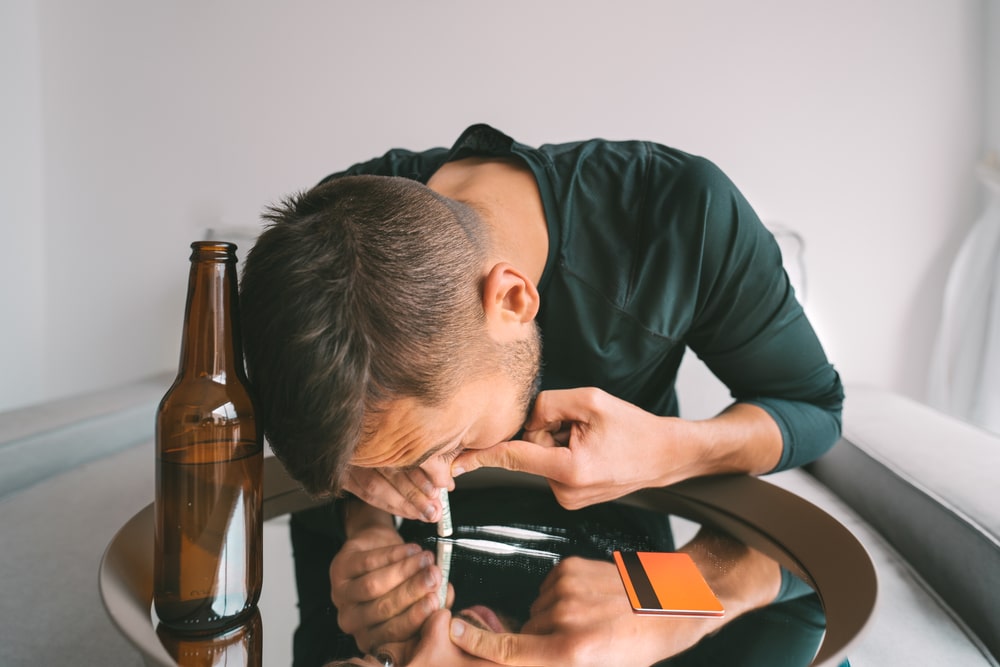
Snorting (also called insufflation) involves inhaling drugs into the body. It is an effective delivery option that’s noninvasive, virtually painless, and easy to administer. In fact, doctors use intranasal administration when delivering medication to children who fear needles or have a hard time swallowing tablets or pills.
Because of these reasons, snorting drugs is a preferred method among people who use recreational drugs. And the fact that it produces a faster onset of the desired effect makes it even more desirable for users who want a quick fix. It takes about 5-10 minutes for the drug to get into the system and produce the high. This is because of how fast the drugs diffuse through the mucus membrane in the nose.
Drugs that are commonly snorted include:
Let's look at some of these drugs.
MDMA is an amphetamine. Structurally, it is similar to the hallucinogen mescaline and stimulant methamphetamine. MDMA comes in capsule, tablet, powder, and liquid forms. “Molly” is a pure crystalline powder form of MDMA that's popularly sold in capsules. It's known to produce feelings of intense empathy, euphoria, and heightened sensations of sound and color. Usually, those who snort ecstasy want a faster onset of effects and a more intense high. This drug is very popular in rave scenes, across the United States.
Xanax is a Central Nervous system depressant that slows down brain activity to produce a tranquilizing and sedating effect. It's these calming effects that make it effective for treating mental health disorders. Xanax comes in tablet form that's taken orally. The prescription drug is meant to be swallowed whole, but users crush the tablet to snort it. Like snorting meth or heroin, snorting Xanax is believed to give one a quicker high because it enters the bloodstream faster. But Xanax and other benzodiazepines are not only harmful to snort, but this also makes them less effective. This is thanks to the particular chemical markup of the drug.
Snorting cocaine might not be the fastest way to achieve a high like injecting and smoking. But it produces long-lasting effects. As one inhales the drug, it coats the soft tissue in the nasal cavity and gets absorbed by the sensitive nasal membranes. Cocaine is absorbed into the bloodstream and flows to the brain to produce the desired effect. In the process, it narrows various blood vessels, thus restricting the flow of blood to specific tissues. Cocaine is one of the most commonly snorted drugs in the US. In 2014 alone, there were about 1.5 million current cocaine users 12 years and over. Unfortunately, cocaine abusers are at a high risk of seizures, cardiac arrest, and sudden death.

Snorting heroin is not the most common way of administration. But those who think it's safer will choose to snort to avoid IV drug use complications. Some users mistakenly believe that snorting heroin makes it less addictive. This is not true. In fact, one study shows that those who start by snorting often end up injecting it, because of the tolerance they build-up over time. The most immediate risk of snorting heroin is overdose. According to the National Institute on Drug Abuse, there were 14,019 overdose deaths in the US in 2019.
Drug abuse by itself is a risky undertaking with a host of dangers. But the mode of administration may impact the risk even further. Snorting drugs or sniffing inhalants can change one's cognition, damage the brain and create several other mental and physical complications.
Snorting any drug is dangerous. Many users assume that prescription drugs are safe, but that's not the case. The chemicals components in prescription drugs are designed to contact gastrointestinal tissues and not the nasal cavities, nasal passages, sinuses, or lungs. Snorting exposes these tissues to chemicals, causing inflammation, irritation, and damage.
While the actual risk may vary from one drug to the next, here are some general risks of snorting drugs:
Those who snort drugs may have an increased risk of contracting HIV and hepatitis C if they share equipment as the nasal mucous may have blood.
It is also not uncommon for those snorting prescription drugs to snort other drugs like heroin. Besides, one may experience mental and behavioral changes because of abusing drugs and struggling with the side effects. As the problem becomes evident, an individual may struggle with shame, anxiety, and low self-esteem to the extent of becoming socially isolated.
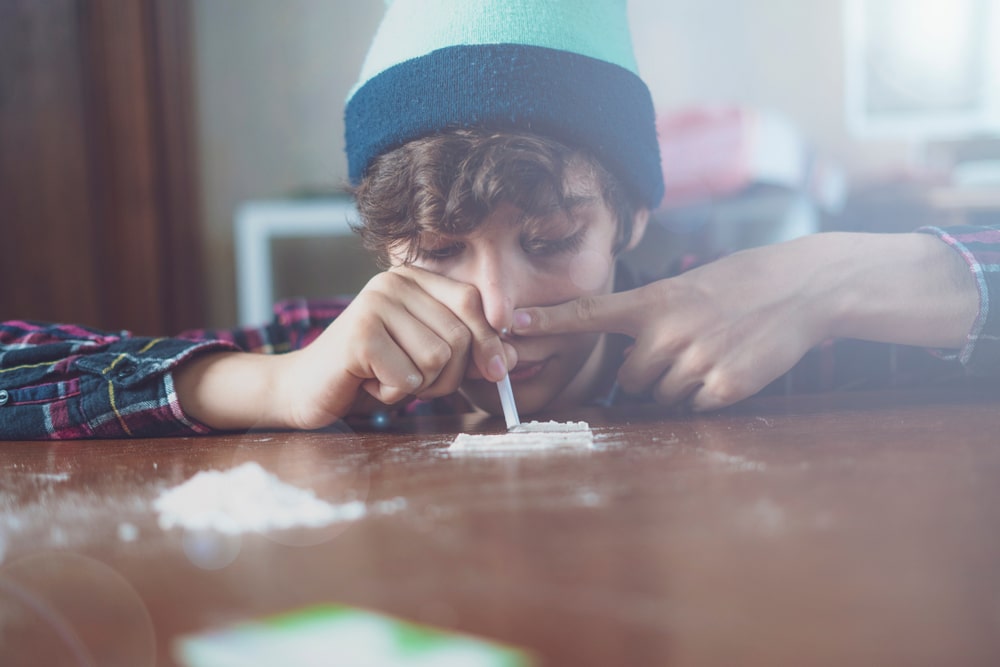
Above all is the most overlooked risk – the adverse effects of filler agents used in the drug. Most illegal drugs that come in powdered forms, like cocaine and heroin, are often cut with other drugs or substances. Cocaine and heroin, for instance, may include fentanyl. Fentanyl is potent. It increases the dose strength and causes overdose among those who have no idea they're even taking it. Household products, foodstuffs, and talcum, are also pretty common fillers. Talcum is harmful. Studies show it might cause low blood pressure, convulsion, chest pain, lethargy, fever and even coma.
Dependence may happen when an individual snorts drugs. Drugs are habit-forming and addictive. So users build tolerance and have to take more of the drug to achieve a high. Any attempt to stop might cause withdrawal symptoms, which can be mild or severe depending on the type of drugs, individual, and period of use. In case the symptoms are severe, one should find a treatment facility that will help with the detox and rehabilitation.
According to the Centers for Disease Control and Prevention, there were more than 81,000 drug overdose deaths in the US in the 12 months ending May 2020. Synthetic opioids – mainly manufactured fentanyl – are the leading cause of these deaths. But there has been a notable increase in overdose deaths among heroin and cocaine abusers during the pandemic.
People use drugs for a range of reasons. Some to fit in, rebel, or even just to escape their reality. Others use drugs to experiment, relax, or release boredom. Drugs excite the parts of the brain that make you feel good – but they also do so much more harm, as you'll notice in this article. Some very real dangers come into play when mixing drugs with other substances.
Drugs are anything but equal. Sedatives like heroin, alcohol, and benzodiazepines have a numbing effect and tend to slow down body and brain functions. Stimulants like cocaine, ecstasy, crack, and amphetamines can give users a rush of energy and make them more alert. Hallucinogens, like psilocybin mushrooms and LSD, tend to alter the way users see, feel, smell, taste, or hear.
When taken in large quantities, sedatives can be fatal; stimulants can trigger panic attacks or anxiety; and hallucinogens can cause erratic or dangerous behaviors. But the question is what would happen when these drugs are mixed together?
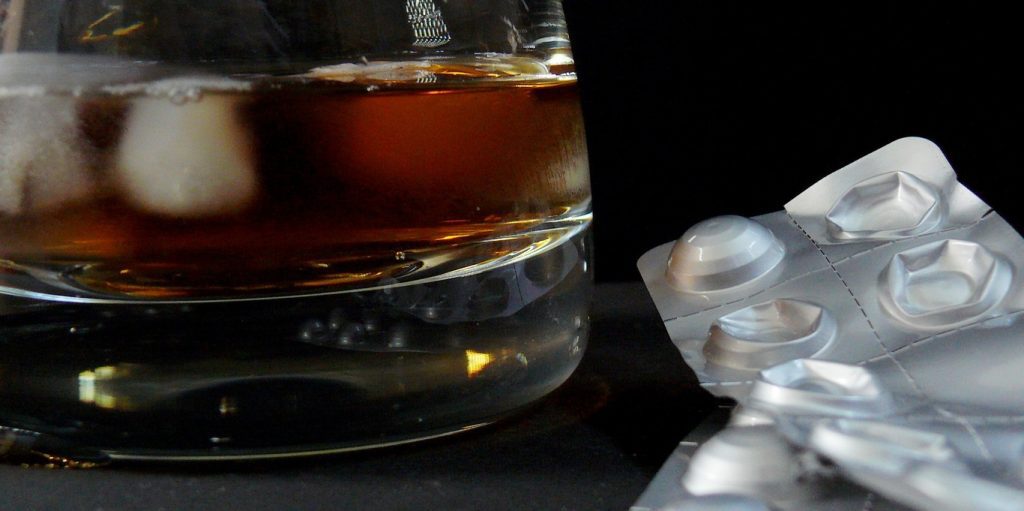
Polydrug use is when users mix drugs or take one drug while still under another drug's influence. It can include the use of illegal drugs, alcohol, over-the-counter medications, and prescription drugs. People mix drugs for a range of reasons, with the most common ones being:
The problem with using more than one drug at any given time is that the effects become even more unpredictable. It is not always possible to tell the exact impact of a single drug or drug dose. Drug use affects each person differently. Sometimes, a person can use the same amount of a specific drug on separate occasions and have different effects each time. The difference happens due to reasons like:
It is hard to predict the effects of a single drug. But it is even harder to predict the effects of multiple drugs. In addition to the factors above, the effect of multiple drug use may vary based on the mixture's contents. Blending drugs with the same physical effects – like two or more sedatives or two or more hallucinogens) can be particularly dangerous. The blend is riskier because it amplifies pleasurable and adverse effects. Combining drugs like cocaine and ecstasy will elevate the ‘high’ and also increase the risk of a heart attack.

One of the most significant risks of mixing drugs is "combined drug intoxication (CDI)." CDI happens when two or more substances are taken simultaneously and can lead to life-threatening conditions like seizures, heart problems, coma, brain damage, liver damage and failure, stomach bleeding, and even death. There were 67,367 drug overdose deaths in the US in 2018, according to the Centers for Disease and Control Prevention report.
Although we like to think about these drugs in isolation, for example, "fentanyl overdose deaths," a recent study by the National Center for Health Statistics revealed that most drug overdose deaths involve a mix of two or more drugs.
Many different types of lethal drug combinations exist and contribute to the raging drug overdose epidemic in the US. According to the Center for Disease and Control Prevention analysis, many opioid deaths also include other drugs.
A drug overdose doesn't necessarily happen because of taking too much of a single drug or alcohol. In fact, it mostly occurs when users overdose from a drug combination. Here are some examples of how mixing drugs can kill:
1. People mix two or more drugs – often the same class of depressants or stimulants – assuming that taking half of the usual dose of each of these drugs at a time will produce a similar effect, but it's not the case. Even a small amount of another depressant or stimulant can increase the impact - way beyond what would have been taken individually.
The effect is particularly fatal with depressants like synthetic opioids, alcohol, and tranquilizers like barbiturates and benzodiazepines. These drugs depress the central nervous system, which controls the respiratory system and heartbeat. Depressants slow down breathing and reduce heart rate. This, in turn lowers the blood pressure and the amount of oxygen that flows to the brain, leading to hypoxia. As a result, rapid cell death occurs in the brain and consequently causes brain damage or death.
2 Mixing stimulants and depressants – this sends contradicting messages to the body, impairing its function. The respiratory, cardiovascular and nervous system are put into a frenzy with simultaneous conflicting messages to slow down and speed up. This causes severe consequences and can lead to coma, fatal overdose, cardiac arrest, slowed breathing and in some cases, death.
3. A single drug – like a prescription drug or a glass of wine – may not impair a person's ability to drive. However, a combination of a glass of wine and the prescription drug may exponentially increase the effects of both so that the user may show signs of severe impairment. Driving while under the influence of mixed drugs can lead to severe injury or death of self and/or others.
4. Mixing alcohol and cocaine can be dangerous, especially when both these drugs are broken down in the liver simultaneously. When both drugs are present, the liver produces cocaethylene, a harmful chemical that stays in the body for extended periods and may increase the chance of heart attack, seizures, and even sudden death. Cocaethylene can also cause cardiac arrhythmia, brain damage and aneurysm.
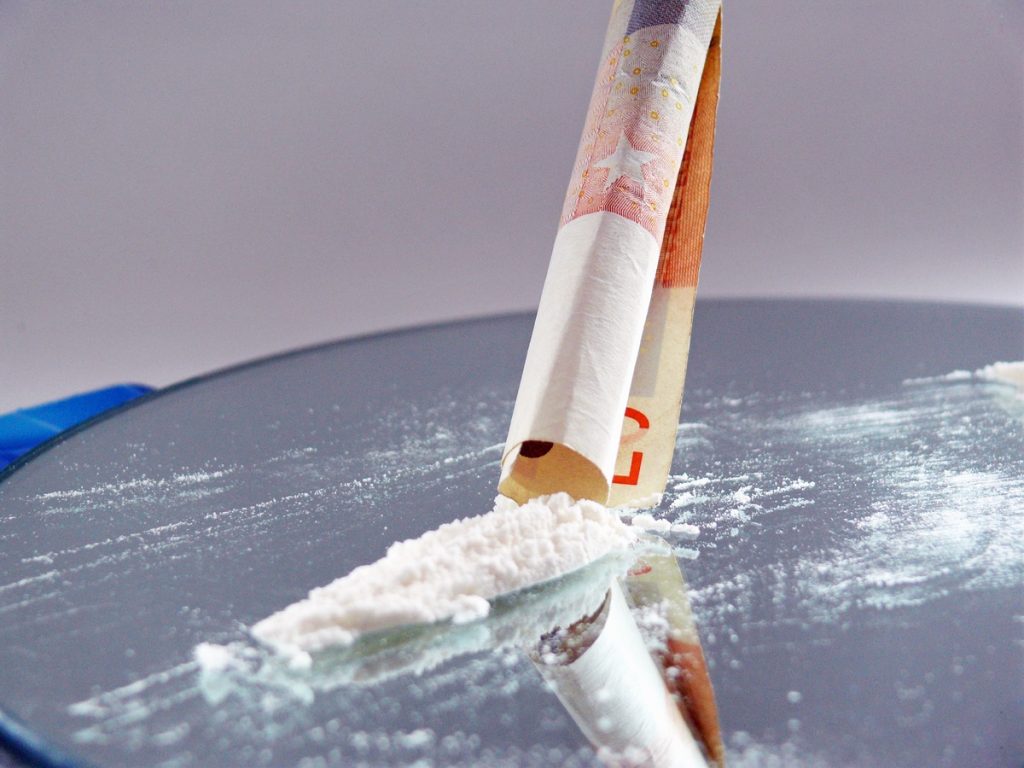
5. Benzodiazepines mixed with alcohol, severely increases the deadly risk. Both of these drugs affect the same neurotransmitters. Their combination amplifies the intoxicating effects of alcohol and benzos and causes memory loss, hallucinations, impaired coordination, intense dizziness, severe depression, and even suicidal thoughts. The combination also depresses breathing, slows down the heart rate, causes seizures, and results in loss of consciousness, coma and death.
Anyone willing to risk their lives for recreational or social reasons has a serious drug use problem. The same applies to those who use drugs to try to overcome their mental health issues like anxiety, depression, or stress. People with polydrug addictions need intense addiction treatment and therapies because of the augmented damage their brains have sustained from the use.
Meth users have a range of symptoms that are commonly seen in people with other substance abuse disorders. They experience high blood pressure, increased heart rate, as well as strong delusions and paranoia. Like other drug addicts, they may also suffer from memory loss, brain damage, stroke, mental health disorders, among other issues with long term use. However, meth users have a few signs that are specific to the drug, like meth mouth, which we will explore in this article.
Methamphetamine is one of the most commonly abused synthetic drugs in the world. In the US alone, 5% of the population, or 12.3 million people, have used meth at least once in their lifetime. Another 600,000 Americans use it every week. But you shouldn’t mistake its popularity for something good.
Meth is a dangerously addictive drug that can cause severe addiction and mental and physical health issues.
This shouldn’t come as a surprise because meth is made from strong industrial chemicals corrosive to the body. Again, it comes in a wide variety of forms – including tablets, powder, or crystals. This makes it easier for users to smoke, inject, sniff/snort, eat, or swallow depending on their environment and preferences.
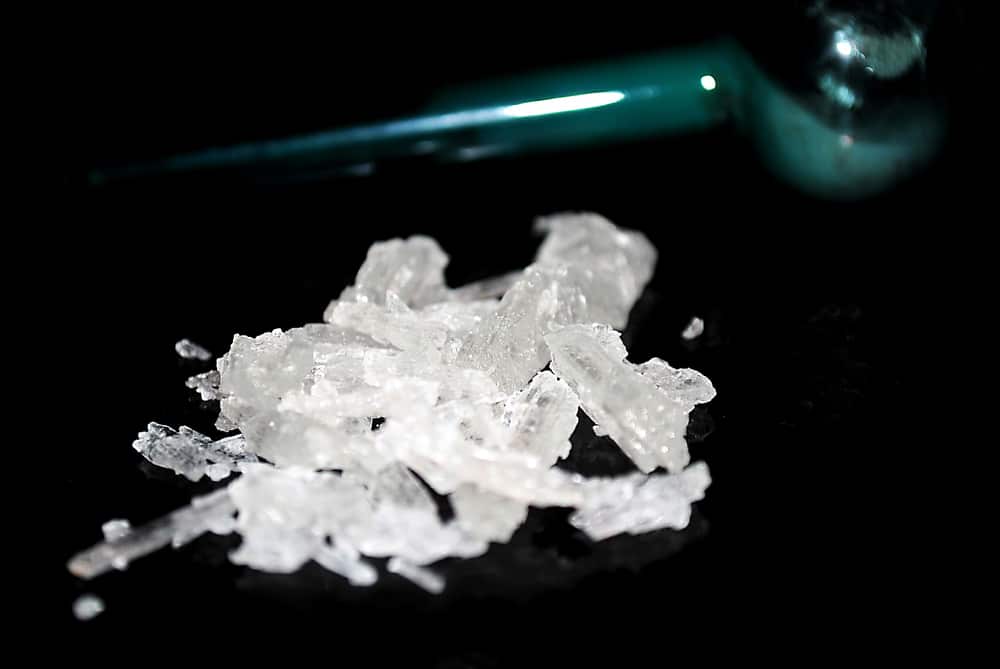
Unlike other drugs such as cocaine and heroin, its cravings are way more intense. Meth users will go on a “run” where they keep on ingesting the drug for long periods until they overdose or run out of their supply. So, the signs will be evident within a few weeks of use.
Meth addiction is difficult to hide because it causes open skin sores and eats away at the teeth. The harshness of meth’s chemical makeup makes it corrosive to both soft and hard tissue. The acid in the drug eats away the user’s tooth enamel, causing rapid decay. It also corrodes the gum, causing it to bleed and pull away from the tooth. Dental issues associated with meth abuse are referred to as meth teeth or meth mouth.
Meth can be devastating to one’s dental health. According to a 2015 study published in the Journal of the American Dental Association, it’s use can cause extensive tooth decay, dry mouth, gum disease, and cracked teeth that affect the smile of users and their ability to chew. Meth mouth describes the visible effects of oral disease in a user due to rampant tooth decay and gum disease that happens with the drug use.
When someone ingests or smokes meth, they will rot their gums, teeth, and surrounding tissues. In most cases, they will experience painful dental abscesses and oral sores and even lose their teeth, and parts of their lips or mouth like tonsils, and tongue. Of the 571 meth users in the JADA’s 2015 study:
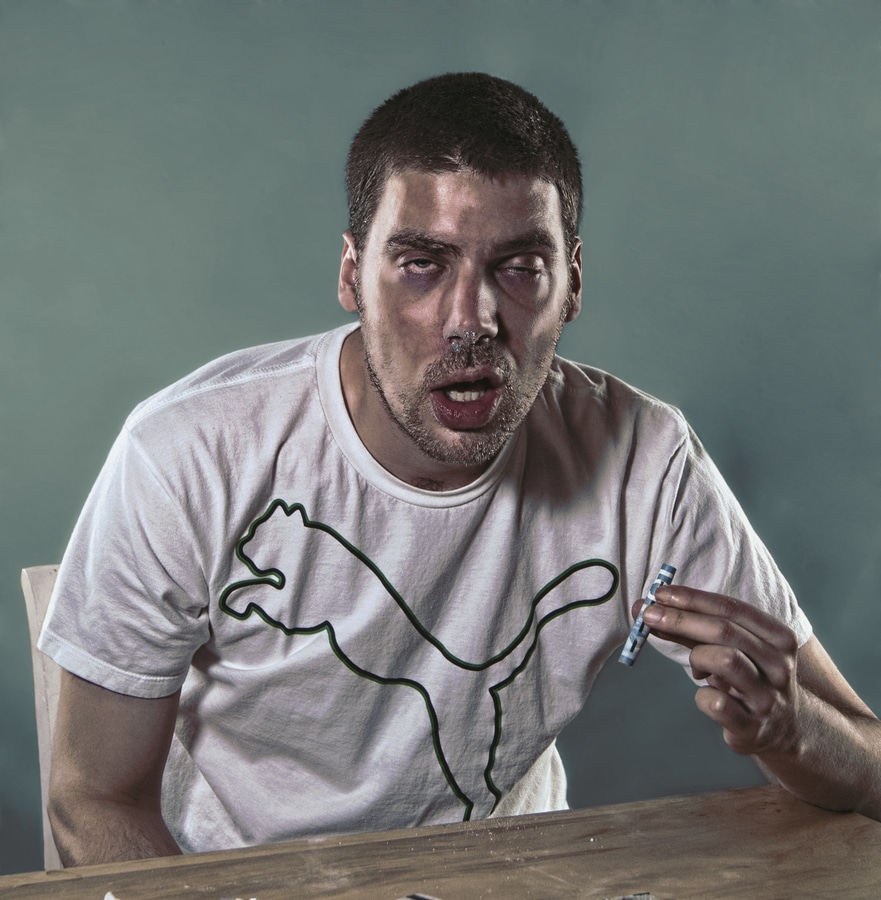
According to the American Dental Association, the pattern of cavities found in meth users is similar to those in baby teeth. Meth abusers are twice as likely to have cavities, twice as likely to have at least two decayed, missing or filled teeth, and four times as likely to have ever developed cavities compared to the general population.
One of the few ways meth affects the teeth is through hyposalivation (or dry mouth). Saliva is usually the first line of defense in fighting harmful bacteria in the mouth. The enzymes in saliva buffer acids and moisturize the mouth, keeping it in a homeostasis state. But meth use affects salivary glands, preventing the production of saliva, resulting in dry mouth.
Although studies and debates regarding meth use and tooth decay are still ongoing, one theory suggests that meth narrows blood vessels in salivary glands, inhibiting saliva flow. Other theories argue that drug abuse affects the parts of the brain that controls the salivary glands. Either way, meth, by itself, contains some level of acidity which directly affects the teeth.
Additionally, meth users drink lots of fizzy drinks to combat the effects of very dry mouth. But with little to no saliva in the mouth, that only creates an even better environment for bacteria to thrive.
To make matters worse, meth users grind or clench their teeth due to drug-induced nervousness, anxiety, and physical stimulation. Add that to already decaying or corroding enamel, as the situation gets out of hand.
And when all the focus is on acquiring and consuming the drug, methamphetamine users are less likely to practice good dental hygiene like flossing or brushing. Most of them won’t take care of their overall body, let alone oral health. And since the meth high lasts up to 12 hours, that’s a long enough time for acids to erode the teeth.
People who struggle with meth addiction and its effects may benefit from addiction treatment. Treatment programs exist to help those who abuse meth to quit and lead normal healthy lives. Most of them offer holistic treatments to address the underlying problem along with the side effects of using, like meth mouth, or skin sores, etc. However, like most conditions, it’s always best to catch the addiction early, before things have gotten out of hand.
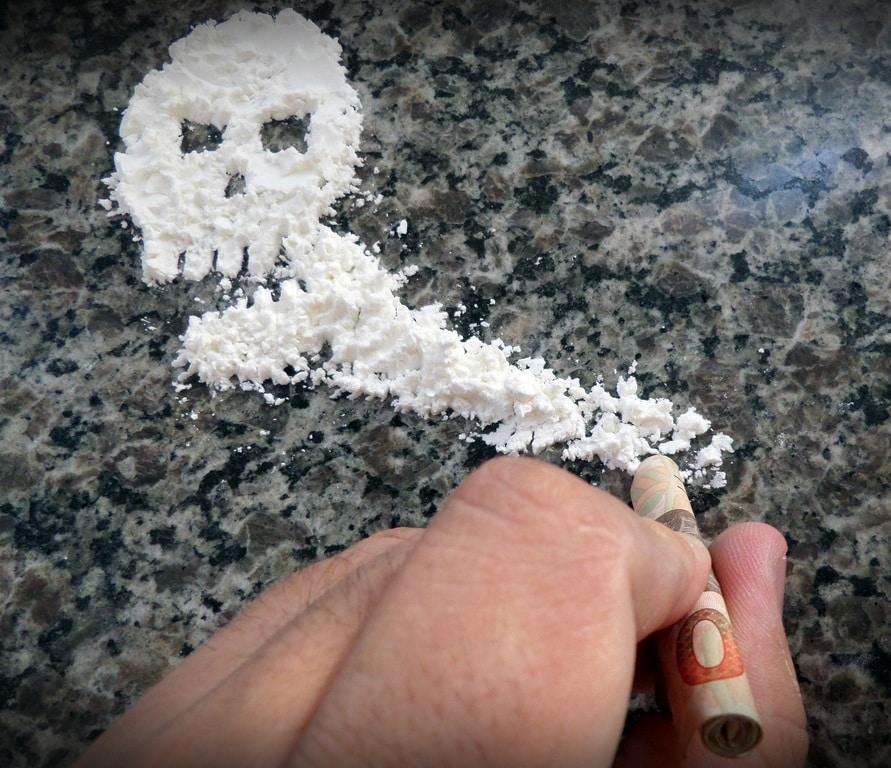
Meth mouth is incurable if the damage is widespread. This is why the importance of early treatment can never be overstated. Gum diseases and tooth decay, for instance, are highly treatable when caught early. But it might prove a challenge when the damage is severe. When untreated for prolonged periods, the patient may need extractions, dentures, and implants to reconstruct the damage.
The use of meth is linked to a range of severe health issues and irreversible mental and physical damage. Effects like bone and tooth loss, scarring, heart issues, organ failure, and permanent memory loss are common among meth users. Studies even show that long term use of meth can induce changes similar to dementia and Alzheimer’s. It’s therefore essential for the patients to go enroll to reputable treatment centers for medical detox and rehabilitation. Treatments can help fight the addiction, and resulting problems.
Drug rehab statistics show that the percentage of those who will relapse after a period of recovery ranges from 40 to 60%. These recurrence rates are similar to those of chronic illnesses like hypertension and diabetes. People spend a lot of money and effort on treatment, so why is drug rehab so frequently unsuccessful?
Addiction is commonly known as relapsing disease. This might explain why over 85% of patients with drug use disorders relapse and return to use within a year of treatment. Studies show that at least two-thirds of recovering individuals relapse within weeks to months of starting treatment.
The aim of substance use treatment is to help individuals achieve lasting abstinence and return them to productive functioning in the community, family, and workplace. According to research that monitors patients for extended periods, a majority of those who enroll and remain in treatment quit abusing substances, reduce criminal activity, and enhance their social, occupational, and psychological functioning. But the treatment outcome bases on:

Relapse is a normal part of recovery, just like for other diseases, like diabetes or hypertension. It is important to keep receiving treatment.
“Relapse rates for patients treated for drug abuse are similar to those for people treated for chronic illnesses like asthma and high blood pressure.”
Relapse to drug use doesn’t mean that treatment has failed. The chronic nature of substance dependence means that relapse can be part of the healing process for some patients. When someone returns to drug use after a period of abstinence, he or she needs to speak with their caregiver to resume, modify, or try other treatment options.
Ending drug use is a huge milestone, but it’s just a part of a long and complex recovery process. Individuals still need to overcome many challenges. Relapse occurs when one gets stuck along the way. They’re faced with a challenge but are unable or unwilling to confront it. So, they turn to inappropriate coping mechanisms as a way to deal with their inner turmoil and dissatisfaction. Unfortunately, this only leads them right back to substance abuse.
Reputable drug rehabs offer remarkable help to people in need. The training, therapies, support, and supervision included in these treatment programs aid individuals in depths of substance dependence find new way of living. But the National Institute of Health states addiction is a chronic condition that requires ongoing care. For that reason, more than 50% of those who pass through drug or alcohol rehabs need multiple rounds of therapy to attain a form of recovery that lasts. But even so, not all of these individuals emerge successful in their fight against addiction.
This begs the question, why is the drug rehab so frequently unsuccessful?

Why is drug rehab unsuccessful? It's not really a failure if you just keep trying.
Completing substance abuse treatment doesn’t guarantee sobriety. After leaving rehab centers, patients usually go back to environments where they abused drugs. Some places, people, or things can spark memories of drug use, and trigger urges that cause relapse.
Different aspects can increase the chances of relapse, including:
Triggers include anything from sensations, feelings, or thoughts to relationships and situations that cause the recovering patient to use after a period of abstinence. Holiday parties involving social drinking, exposure to drug-related objects, walking through drinking joints, or hanging around friends who are still using are examples of triggers that can cause a relapse. Unfortunately, recovering patients are consistently exposed to these triggers, making it hard to abstain.
Substance abuse treatment doesn’t end at the rehab facility. Recovering patients should continue with further treatment as specified in their relapse prevention plan. Rehab may stop the urge momentarily, but taking the right steps ensures long-term recovery. After-care services like 12-step, support groups, and other prevention programs arms individuals with coping skills that are essential to staying sober. A strong support system from friends, family members, recovery coaches, and peers can also encourage one to soldier on. But many patients don’t get this assistance, so they end up sliding back to their old habits.
Other internal and external factors like fatigue, physical pain, depression, self-pity, dishonesty, and unemployment can cause an individual to relapse. Researchers from one study discovered that risky drinking is common among the unemployed and that unemployment is a risk factor to drug use. Pity parties – when one feels sad, they can no longer hang with friends at bars or events -- can spark thoughts and eventually cause a relapse.
Just because a patient accepts to enroll in a rehab center doesn’t mean they’re all for the idea (or ready for that matter). There are different things that one can do to undermine their recovery process. For instance, one can join a program with no sense of commitment to life after addiction. Although therapists may use cognitive behavioral therapy among other treatment modalities to address such a problem, it takes dedication and desire to get better on the patient’s side to succeed in treatment.

Many factors will come into play with addiction treatment success. If you're reading this, it's not too late to achieve sobriety.
The same applies to patients who won’t share their insights during group therapies or ones who mock others in the counseling sessions. These individuals often have unresolved issues and disrupt meetings, which are essential in addiction treatment. Patients who don’t listen or are adamant about opening up aren’t able to take advantage of the healing and usually return to using soon after treatment.
The addiction rehab industry is packed with false claims and unsubstantiated care. As we’ve mentioned earlier, a significant percentage of recovering patients resumes drinking shortly after treatment. Research also shows many individuals who pass through rehabilitation wind up with a greater sense of personal failure and despair. This could be because of one or a combination of the following reasons:
With so many factors contributing to addiction, creating a standard treatment approach that works for everyone is impossible. The National Institute on Drug Abuse details the principles that rehab centers should use to individualize care for each patient. But still, most patients only pass through a short detox period, followed by a series of lectures, 12-step, and group therapy. Generalized treatment isn’t effective in addressing the mental, physical and emotional needs of each client.
The intensity of detox varies depending on the type of substance abused, length of use, etc. When a patient doesn’t get enough detox, it means he or she may still have the toxic build-up in their body. This will predispose them to cravings or flashbacks that may act as a trigger. Sadly, run-of-the-mill detox programs don’t consider this and leave their patients not fully detoxified.
Substance addiction often co-occurs with mental illness or other conditions. The Substance Abuse and Mental Health Services Administration revealed that there were about 9.2 million people who experienced both mental health and substance abuse disorders in the US in 2018. Combining strategies from fields of addiction and psychiatry treatment is a great way to ensure long term sobriety, according to SAMHSA. When the dual diagnosis isn’t taken into consideration, then the patient is highly likely to suffer a mental relapse and end up using the substance again.

While horses are cute, and equine therapy has been proven to offer help for adolescents who struggle with depression and anxiety, there is no proof on its effectiveness in drug rehabilitation.
Some rehab centers – particularly the luxury ones – go above and beyond to make the lives of their patients comfortable. They offer vast services like ocean therapy (riding a yacht), equine therapy (tending to or riding a horse), aquatic aerobics, fitness training, qigong therapy, work assignments, leisure skill groups, among other services along with other care programs. While these are great, there’s no scientific evidence of their effectiveness in substance abuse treatment. These services are great differentiators, but none of these rehabs monitors patient outcomes, despite promising quality results. These are just some of the reasons that drug rehab is so frequently unsuccessful, depending on how you look at things.
A concerned Reddit user posed a question about a bizarre thing that had happened to him after using molly. He bit his cheeks and lips without even noticing. “The next thing I know, my lips got huge, puffy, and swollen as though I had a disease,” he added.
The user wanted to know why he bit his lips that bad and whether there was anything he could do to prevent it from ever happening again. This ignited all manner of responses from users, with most of them suggesting that it was a common side effect of using Molly. “Salt water gargle for the inside of the mouth, and Vaseline for the outside. Neosporin, if they are really bad, and a binky, aka pacifier for next time,” one comment read. Rave Jaw is muscle spasms in the lower jaw commonly accompany Ecstasy use, often accompanied by teeth grinding.
This comment caught my eyes. All along, I thought pacifiers were for kids. As it turns out, people use them when they go out partying. Partly for fashion, but mainly as a safety measure.
Here’s how.
MDMA users don’t just deal with euphoria and decreased inhibitions. They also experience lip-chewing, jaw clenching, and tooth grinding, which are synonymous with a condition called bruxism. So, they wear "binkies" or pacifiers to raves, or discretely chew gum, to avoid destroying the soft parts of their mouth.

Pacifiers, glow sticks and vapor rub are common staples at raves. Now you'll understand why.
Bruxism is a reflex action triggered by a discrepancy between a person’s perceived ‘optimal bite’ and their actual bite. It generally affects people when they are sleeping, and in 70% of cases can be as a result of increased stress and anxiety.
Sleep disorders, like sleep apnea, are also common causes of bruxism. According to experts, sleep apnea arises from the micro-arousal of the sympathetic nervous system. This triggers an increase in one’s heart rate, brain activity, respiratory rate, and eventually rhythmic masticatory muscle activity that makes them grind teeth.
However, most ravers don’t grind their teeth because of stress, anxiety, or sleep apnea. They do so because of the recreational drugs that they use. These drugs are common in clubs, dance parties, and music festivals. Ravers grind because the drugs trigger the endocrine system to release chemicals into their bodies. Among these chemicals are serotonin in high levels and dopamine, norepinephrine, and noradrenaline in low levels. The latter is most likely to result in jaw muscle compulsory straining and clenching.
Drugs like cocaine, ecstasy, heroin, and meth are central nervous system stimulants. Their mechanism of action bases on the brain’s neuronal transmitters, which are critical for functions that involve sleep cycle, memory, learning, hormone regulation, body movement, and so on. They also trigger motor disorders that cause bruxism. Ecstasy causes the most concern when it comes to severe awake and sleep bruxism.

Being around bright lights, loud music and friendly faces can increase serotonin levels, which can make you more likely to grind your teeth.
Ravers are likely to get so high and grind their teeth even more compared to those who use recreational drugs like MDMA at home. MDMA releases serotonin. But the brain produces even more serotonin to respond to external stimulation. So, when a person goes to an electronic dance music event or a rave scene, his or her brain produces more serotonin because of the environment, lights, music and community (talk about peace, love, unity, and respect culture). The excitement is more than what they’d experience at home with house music and less crowd. Besides, there is a higher chance of mixing drugs, such as other psychoactive substances into Molly or ecstasy, which increases muscle tension.
Many ravers will tell you about their sour tongue, lacerated insides of the cheeks and aching jaw after a night out. This is because the rave culture involves the use of psychedelic drugs, among other substances that affect the mouth.
While ecstasy teeth clenching isn’t inherently harmful, dentists express concern because users often report extended dry mouth as a result of reduced saliva production after using. Add that to bruxism, dehydration from dancing and possible consumption of soda, and the potential of teeth damage multiplies.
Besides, bruxism triggered by ecstasy can become chronic. Although the effects of use may wear off in two days, some patients may continue grinding for months after use. The most common symptoms of bruxism include:
Headaches and facial pain often go away when the grinding stops. But tooth damage only occurs in severe cases and may require treatment.
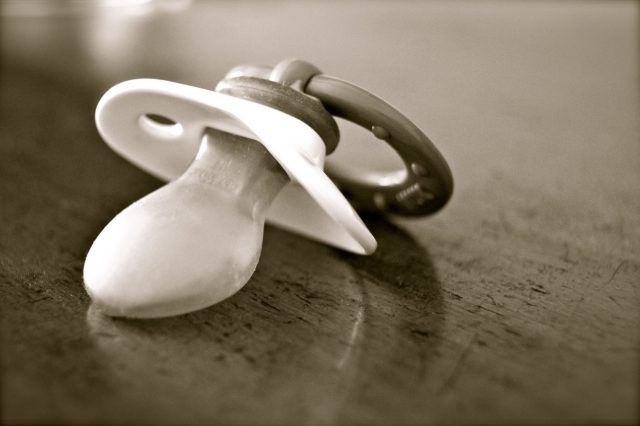
A simple child's pacifier became a fashion statement, because ravers would use them to stop grinding their teeth.
Pacifiers were a favorite of rave fashion back in the 90s when ravers did a variety of drugs in one go and tended to grind their teeth down to the gum. The paraphernalia provided them with something to chew on and also served as a fashion statement. Today, pacifiers are used to protect the teeth and cheeks from the effects of drugs used to enhance the rave experience. A pacifier helps those who chew really hard by protecting them against chewing their lip, locking the jaw, or and having jaw pain.
Mouthguards and splints work the same way as pacifiers. They create a physical barrier between the upper and lower teeth, thus preventing them from damage. Mouthguards and splints balance out the pressure across the jaw and can minimize any grinding noises.
The best way to treat ecstasy-triggered bruxism is to quit using it altogether. Since the condition usually happens after use, it is a great idea to stop using it. Ravers can find another way to make merry while clubbing, that doesn’t cause harm.
Medications aren’t always very effective in treating bruxism. But doctors prescribe muscle relaxants, and stress or anxiety medication. Sometimes, they administer Botox injections to help those with severe bruxism who don’t respond to other treatments.
A muscle relaxant weakens the muscle enough to minimize the effects of clenching and grinding, but not so much as to prevent proper use of the jaw muscle for eating. Stress and anxiety medications, on the other hand, help address stress and other emotional problems that may be causing the bruxism.